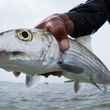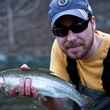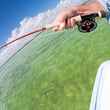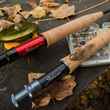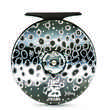A few years ago all the manufacturers changed their wading boot soles from felt to rubber. This seismic moment in the industry was not prompted by new materials or consumer demand but rather by a threat to fisheries; Didymosphenia geminata. The assumption that didymo was being carried from far off places to domestic streams via angling equipment -- felt soles were the great demon -- prompted the action. It turns out that greater forces than anglers may have had a larger effect on the increased presence of this nuisance diatom. According to recent research by Queen's University in Ontario global climate change has a hand in didymo blooms. Climate change induced changing ice cover and nutrient loads both create more favorable conditions for the blooms. I don't think this lets anglers off the hook, but it's worth considering for many reasons.
I first started using Simms wading boots when the last generation of G3s were introduced. I purchased them originally as my fair weather boot, wearing a boxier alternative during cold weather, but the fit and features of the G3 soon made it the boot that ruled my wadered foot. When that pair needed to be retired this year I didn't hesitate to pick up the newest incarnation of the G3. I've fished it about twenty times in the past few months and am pleased with the purchase.



